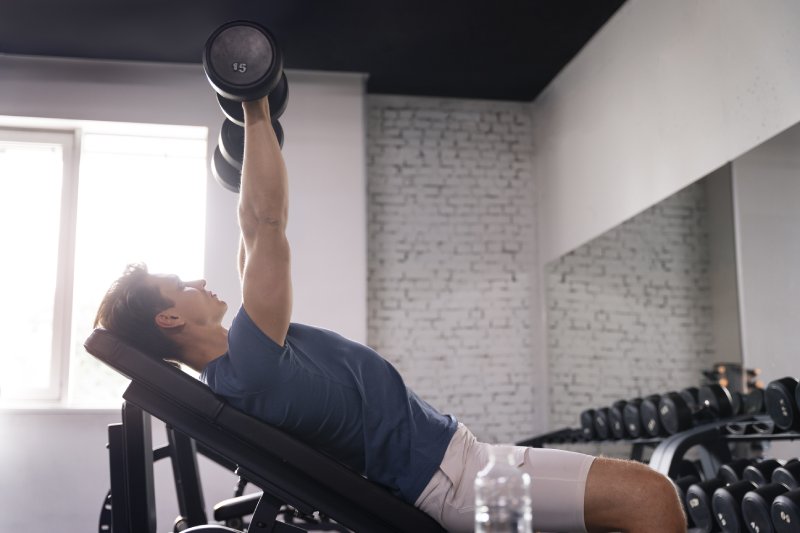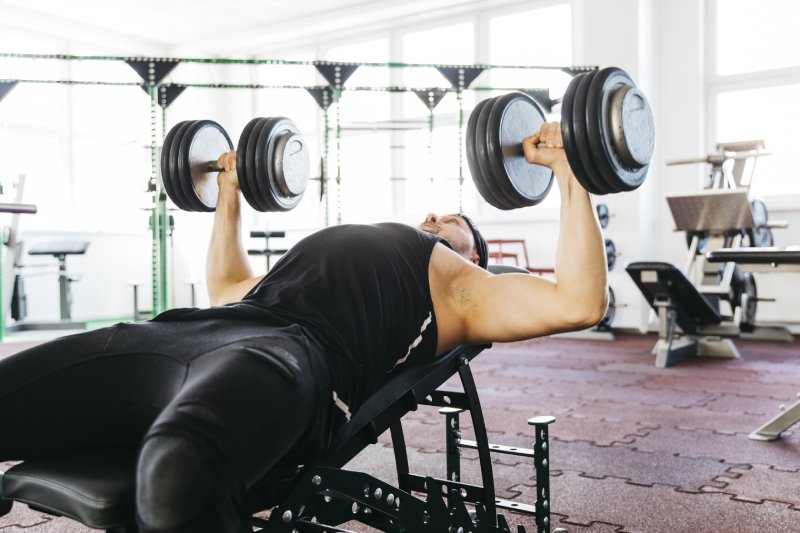The bench press is one of the most effective exercises for developing chest muscles and is especially preferred for upper body strength gain. This movement works the pectoralis major (chest muscle), triceps (back arm muscle) and front shoulder muscles together to provide a balanced increase in strength in the upper body. Regular bench press work not only increases muscle volume, but also increases strength and endurance in daily life activities.
Bench press exercise not only increases muscle strength but also contributes positively to bone health. Weight lifting movements increase bone mineral density, reducing the risk of osteoporosis. In addition, during this exercise, the core (abdominal and lumbar) muscles are also engaged for body stabilization, thus helping to improve general posture and reduce back pain.
In addition, bench press exercise strengthens mental endurance and self-confidence. The physical effort shown while lifting weights creates a sense of accomplishment in the person, and the training process that requires discipline contributes to reducing stress. A healthy upper body and strong muscles both increase sports performance and support mobility in daily life.

How to Do Bench Press Exercises?
The bench press exercise is a basic strength training movement that effectively works the chest, shoulder and arm muscles when done with the right technique. First, lie on your back on a suitable bench and position your feet so that they are flat on the floor. This position keeps your body balanced and reduces the risk of injury during the movement. In addition, the natural arch of the back should be preserved and the lumbar gap should remain slightly open.
To grasp the bar, the hands are held slightly wider than shoulder width. The bar should be held and lifted, usually just above the head. When taking the bar from the rack, the arm muscles should be fully extended and lowered in a controlled manner. The bar is lowered slowly and controlled towards the middle of the chest muscles (lower part of the sternum). Inhalation is taken at this stage.
When the bar touches the chest, the arms are bent, but the elbows should not be opened too far to the sides; a 45-degree angle is ideal. The return to movement begins just before the bar touches the ground. At this stage, the breath is exhaled and the bar is pushed upwards using the chest muscles and arms. The slow and controlled movement while lifting the bar allows the muscles to work effectively and reduces the risk of injury.
Another important point to consider when doing bench press is the rhythm of the movement. Doing it too fast makes control difficult and can lead to injuries. Similarly, doing it too slow and for too long a contraction can cause excessive muscle fatigue. The best method is to do it at a medium tempo, paying attention to the harmony of breathing and movement.
When choosing weights, weights that are suitable for the person’s training level and that can be lifted in a controlled manner should be preferred. For beginners, it is important to learn technique with an empty bar. Then, the weight can be gradually increased. It is recommended to have a spotter (assistant) during training; this person increases safety by providing support during the lifting of the weight.
Finally, different grips and variations can be tried regularly to increase the effectiveness of the bench press exercise. For example, a narrow grip targets the triceps muscles more, while a wide grip targets the chest muscles. In addition, incline (raised bench) or decline (downward bench) variations can be used to work the upper and lower chest muscles from different angles. In this way, muscle development is balanced and effective.

Tips for Bench Press Exercises
There are some important points to consider in order to get effective results and reduce the risk of injury in the bench press exercise. The first of these is correct form. The natural arch of the back should be maintained throughout the movement, the hips should touch the bench and the feet should be firmly on the ground. This position increases the body’s stability and facilitates the transfer of power during the movement.
When gripping the bar, the hands should be slightly wider than shoulder width apart. A grip that is too narrow or too wide can create unnecessary load on the shoulder and wrist joints and lead to injuries. In addition, the bar should be lowered to the chest in a controlled manner and the elbows should be kept at an angle of approximately 45 degrees. In this way, both the chest muscles work more effectively and the shoulder joints are protected.
Breath control is very important during bench press. A deep breath should be taken when lowering the bar, breath should not be held when the bar approaches the chest and breath should be exhaled when pushing up. This breathing exchange increases the stability of the abdominal muscles and provides a stronger stance during the movement. If breath control is not performed, performance may decrease and the risk of injury may increase.
Weight selection is also among the tricks. Starting with very heavy weights can cause deterioration of form and injuries. Therefore, the weight should be at a level that the person can lift and maintain the correct form. The weight should be gradually increased over time, and the load should be increased as the body adapts.
It is recommended to have a spotter (assistant) during bench press. The spotter provides support when needed and increases safety while lifting the weight. It is especially dangerous to work alone in heavy sets. In addition, proper communication should be established with the spotter, and it should be decided in advance when and how support will be provided.

Finally, you should definitely warm up before starting the bench press movement. When the shoulder and chest muscles are warmed up, performance increases and the risk of injury decreases. After a few sets of warm-up with light weights, you should move on to the main sets of the workout. In addition, stretching movements should be done after the workout to support muscle recovery. These tips will help you get the most out of the bench press exercise.



